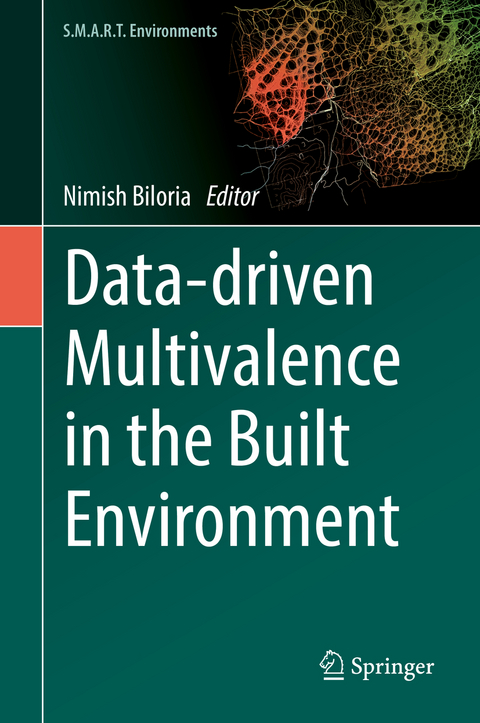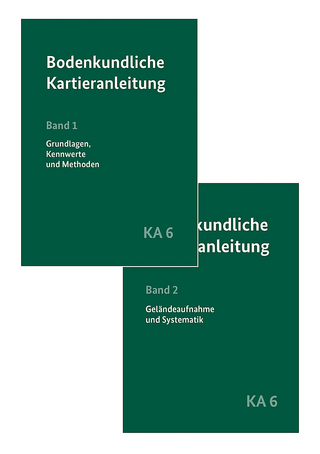
Data-driven Multivalence in the Built Environment
Springer International Publishing (Verlag)
978-3-030-12179-2 (ISBN)
This book sets the stage for understanding how the exponential escalation of digital ubiquity in the contemporary environment is being absorbed, modulated, processed and actively used for enhancing the performance of our built environment. S.M.A.R.T., in this context, is thus used as an acronym for Systems & Materials in Architectural Research and Technology, with a specific focus on interrogating the intricate relationship between information systems and associative material, cultural and socioeconomic formations within the built environment. This interrogation is deeply rooted in exploring inter-disciplinary research and design strategies involving nonlinear processes for developing meta-design systems, evidence based design solutions and methodological frameworks, some of which, are presented in this issue. Urban health and wellbeing, urban mobility and infrastructure, smart manufacturing, Interaction Design, Urban Design & Planning as well as Data Science, asprominent symbiotic domains constituting the Built Environment are represented in this first book in the S.M.A.R.T. series. The spectrum of chapters included in this volume helps in understanding the multivalence of data from a socio-technical perspective and provides insight into the methodological nuances involved in capturing, analysing and improving urban life via data driven technologies.
Dr. Nimish Biloria is an Associate Professor at the, Faculty of Design Architecture and Building at the University of Technology Sydney, Australia. Prior to this, he served as an Assistant Professor at the Faculty of Architecture and the Built Environment, Delft University of Technology, The Netherlands. He has over 15 yrs of experience in the Emergent Technologies and Creative Industry sectors across Europe and Asia and is currently leveraging his global network and expertise within the Australian context. Dr. Biloria’s also serves as the Course Director (Smart cities) at the Faculty of Design Architecture and Building, University of Technology Sydney and was also the Education Manager for the Architectural Engineering and Technology chair Hyperbody, Delft University of Technology, The Netherlands. He has designed and implemented various inter-disciplinary education and research agendas in the areas of Smart Cities & Urban Informatics, Computational Design, Urban Health and Wellbeing, Social Robotics, and Real-time Interactive Environments. Dr. Biloria firmly believes in the strength of inter-disciplinary collaborations to build knowledge synergies and as such has a track record of work across various sectors such as Design, ICT, Human Psychology and Cognition, Healthcare, Humanities, and Robotics to name a few. He has lectured and published his inter-disciplinary research and design deductions at several prestigious and top-ranking institutes, scientific journals, design and technology conferences, scientific books, and magazines globally.
Part 1: PERSPECTIVES ON THE CITY. Chapter1.Smart Equity (Somwrita Sarkar).- Chapter2. The Convenient City(Rob Roggema).- Chapter3. Conceptualization of Smart City: A Methodological Framework for Smart Infrastructure, Smart Solutions and Smart Governance (Aurobindo Ogra).- Part 2:SMART URBAN INFRASTRUCTURE. Chapter4. Development challenges for Big Data Command and Control Centres for Smart Cities in India (Sarbeswar Praharaj).- Chapter5. Understanding consumer demand for new transport technologies and services, and implications for the future of mobility (Akshay Vij).- Chapter6. Smart Interactive Cities: The Use of Computational Tools and Technologies [CTTs] as a Systemic Approach to Reduce Water and Energy Consumption in Urban Areas (Al Saeed Mahmoud and Fadli Fodil).- Part 3: URBAN HEALTH AND WELLBEING. chapter7. Centenarian Transhumanism Aging in Place (Jennifer Loy).- Chapter8. Grey smart societies: Supporting the social inclusion of older adults by smart spatial design (Nienke Moor and Masi Mohammadi).- Chapter9. Real-time interactive multimodal systems for physiological and emotional wellbeing(Nimish Biloria and Dimitra Dritsa).- Part 4: URBAN LIVING LABS.- Chapter10. Design Labs for Data Driven Multivalence(Mathias Funk).- Chapter11. The role of living labs in developing smart cities in Indonesia(Hendra Sandhi Firmansyah).- Part 5: DISRUPTIVE TECHNOLOGIES.- Chapter12. Algae Building: Is This the New Smart Sustainable Technology?( Sara J Wilkinson, Peter J Ralph and Nimish Biloria).- Chapter13. The qualitative image: urban analytics, hybridity and digital representation(Linda Mathews).- Part 6: SOCIO-SPATIAL ECOSYSTEMS.- Chapter14. Multimodal Accommodations for the Nomadic International citizen [MANIC}(Kas Oosterhuis).- Chapter15. Understanding the relationship between smart cities and entrepreneurial ecosystems: the case of Sydney(Cetindamar, D., Lammers, T. and Sick, N.).- Chapter16. Urban Wellbeing in the Contemporary City(Nimish Biloria, Prasuna Reddy, Yuti Ariani and Dhrumil Mehta).- Part7: CONCLUSIONS.
| Erscheinungsdatum | 15.07.2019 |
|---|---|
| Reihe/Serie | S.M.A.R.T. Environments |
| Zusatzinfo | XIV, 338 p. 83 illus., 59 illus. in color. |
| Verlagsort | Cham |
| Sprache | englisch |
| Maße | 155 x 235 mm |
| Gewicht | 684 g |
| Themenwelt | Naturwissenschaften ► Geowissenschaften ► Geografie / Kartografie |
| Sozialwissenschaften ► Soziologie ► Spezielle Soziologien | |
| Schlagworte | Data-driven Design • Interactive and responsive system • internet of things • Smart Health • Smart Mobility and Infrastructure • Urban design and Planning • urban geography and urbanism • Urban Informatics |
| ISBN-10 | 3-030-12179-8 / 3030121798 |
| ISBN-13 | 978-3-030-12179-2 / 9783030121792 |
| Zustand | Neuware |
| Informationen gemäß Produktsicherheitsverordnung (GPSR) | |
| Haben Sie eine Frage zum Produkt? |
aus dem Bereich


